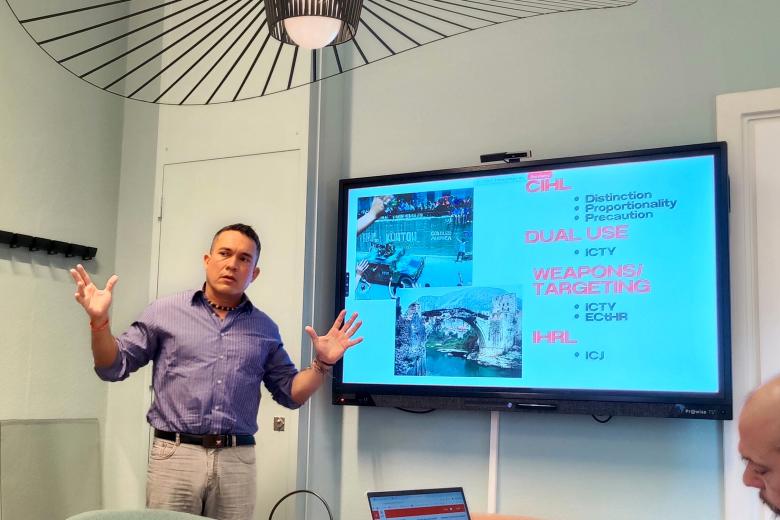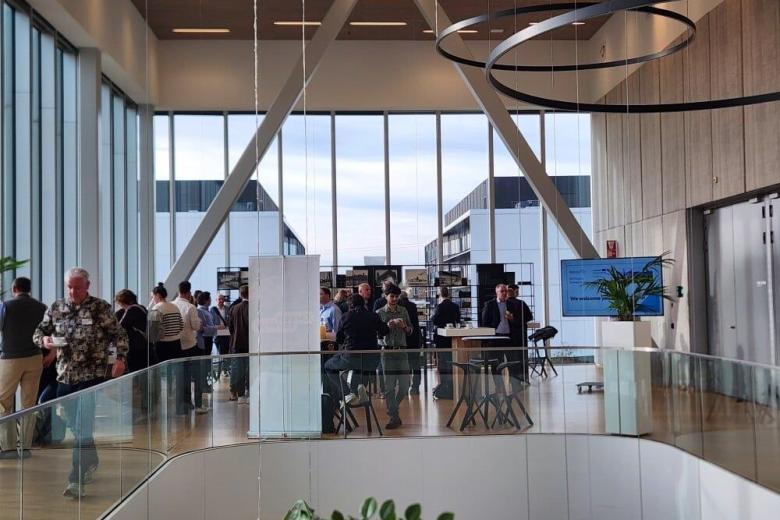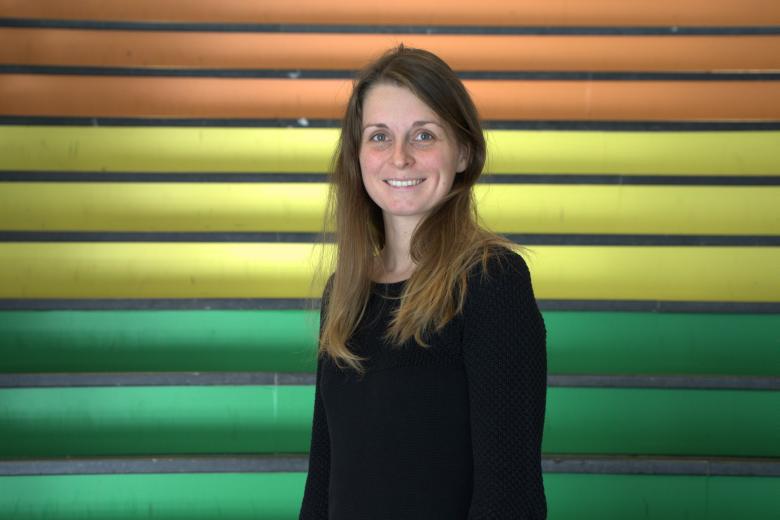Fair healthcare in primary care plus centres in Maastricht
In 2013, it became increasingly clear: innovation in healthcare is a top priority, because costs are continuously rising. Edith Schippers, then Minister of Health, Welfare and Sport, designated nine pioneer sites in the Netherlands as testing grounds for new ways of delivering healthcare, of which one in Maastricht. At these pioneer sites, the ‘Triple Aim’ method was employed which should give insight into whether the interventions were leading to improvements in terms of quality, health and costs.
An example of these interventions is primary care plus, the relocation of specialist healthcare to community centres. The interventions made three promises: 1. That general practitioners and specialists learn through working together; 2. That moving healthcare into the community makes it more accessible, and thus more patient-friendly; 3. That this type of healthcare results in cost reductions.
Exnovation
Willemine Willems, PhD candidate at the Faculty of Arts and Social Sciences, will defend her PhD dissertation on 10 September 2021. In her dissertation, Willemine researches the fairness of this new type of healthcare. “We all come up with great ideas on how to improve healthcare. We set up local initiatives and look at improvements proposed by policy makers in The Hague. But how do we use these initiatives as effectively as possible to ensure that healthcare actually improves? It is important to not only look into the improvements in terms of quality, health and costs, but also in how to make sure patients and doctors consider it fair. That’s what I’m interested in.”
“Through exnovation - the observation of and reflection on daily affairs within an organisation, or in this case during a medical consultation hour - I examine how fair healthcare is achieved. I mainly focus on how doctors and patients navigate new circumstances, how they cope with resistance, opportunities and chances, and especially how they approach this together. This is about connecting ideas so processes can flow, both in the organisation and in the doctor’s office. It is not just about making invisible work visible, but also about figuring out what exactly we can learn from certain processes. We can only make healthcare more sustainable if it is fair as well,” Willems explains.
Consultation
“I joined over one hundred consultations to hear and see what people are doing to accomplish healthcare delivery. I didn't look at what went wrong, but instead tried to uncover why it so often went well. After each consultation, I spoke with both the patient and the doctor to learn more about how they made certain choices, or how they experienced the choices the other person made.
For example, a young patient told me that she feared the doctor wouldn’t take her seriously because she had been to this doctor before with her vague symptoms. During the consultation, the doctor followed a strict protocol. This gave the patient a sense of fairness, because the doctor followed a standardised protocol that was used for all patients equally, which made her feel taken seriously.
Another example is a patient who wanted to be seen as a person with all various symptoms. He found it most important that he was heard and that the doctor listened carefully to all his symptoms, instead of following a protocol.
Doctors are well aware that every patient wants to be treated differently. Most doctors try their best to make patients feel at ease, to observe what they need and respond to that, and to include them in making decisions. Patients, but also doctors, are not consistent in what they consider the best way to do this. It is always important to look at how they explain the situation themselves, how they experience what is happening. This is part of how people make sense of the world around them; people are constantly trying to understand situations. That way they learn whether and when patients consider the healthcare they receive is fair.”
Primary care plus centres
Looking at how fair healthcare is achieved could have been done in a hospital instead of a primary care plus centre. Still, Willems chose to observe the primary care plus centres. “Especially in a new situation like this, it is interesting to see how fairness in healthcare is achieved and new routines are developed,” Willems says.
“Look at for example internal medicine. Relatively many patients come here with vague symptoms. In the hospital, there is no room to say 'I only want to see one patient per hour so that I can take time for my patient and find out where the symptoms come from'. This, on the other hand, is possible in the primary care plus centres, and here is room to develop new routines. In the hospital, routines are often terrifying. First, a patient sees an intern. After that, tests are done and then the idea quickly arises that something is wrong, while that is often not the case.
The intervention in the primary care plus centres created space to develop new routines. For example, there was an internist who, as soon as the patient entered the consultation room, turned his computer screen towards the patient and typed along with everything the patient said so that the patient could read along. A patient then has much more control and grip on what is going on in that room. This type of intervention thus provides more room for creative ideas.
Of course, this is not to say that this type of healthcare is better for everyone. For example, some patients have to travel further to the primary care plus centre than they normally have to do when going to the hospital. And in these facilities, doctors basically only have access to instruments that a general practitioner also has. They therefore have to do without large devices that are at their disposal in the hospital. For some doctors, this provides a lot of creativity and it turns out that they often don’t need large test equipment. But I also saw that it was especially difficult for the eye doctor because you can’t see what’s wrong with an eye by just looking at it. You need devices to be able to tell whether an eye looks healthy or not.”
Promises made by primary care plus centres
The first promise of the intervention through the primary care plus centres is that through collaboration in the centre, the knowledge of general practitioners and specialists will increase. Is this really the case? “The lines between the primary care plus centre and the hospital are shorter, which means that everyone gets to know each other faster and better. General practitioners and specialists often work together here. You see differences in knowledge between the two groups because they view things differently. This is not necessarily a bad thing: they do not integrate the knowledge, but instead leave room for differences. This fragmentation in healthcare is important because this diversity is a fertile soil for creativity and improvement," Willems explains.
The second promise of the intervention is to make healthcare more accessible. “You would assume that it is a nicer experience for patients to go to the primary care plus centre because it is usually closer to home, specialists are less rushed and doctors don't wear scary white coats. Yet patients do not give any of these as reasons in their perception of fairness. The main difference for them lies in the interaction with the doctor. The eye doctor at the primary care plus centre, for example, initially appears rather surly. He often sits at his computer with his back to the patient. But he has his own peculiar routines to break the ice: he speaks dialect with Limburgers and he makes jokes all the time. In this way, he bonds with his patients, who as a result are very open about their symptoms.”
The third promise concerns cost reductions. “The cost reductions are not so much about overhead costs, because these costs continue to exist in the hospital, even if part of the care goes to the primary care plus centres. The cost reductions would instead stem from the fact that the trajectory patients take is cheaper than when they go to a hospital because fewer unnecessary tests are performed. I show that this promise is based on the idea that you can influence the choices that doctors and patients make together by changing their environment. But that change of environment also has very different, more unpredictable effects, which do not always lead to direct cost reductions.”
“Overall,” Willems concludes, “primary care plus care provides a range of opportunities to develop routines that align sufficiently with what patients consider fair and could help create new forms of sustainable care. Tracking and learning from these processes is at least as important as monitoring its outcomes in terms of health, quality and costs.
By: Eva Durlinger
Picture by: Filipe Wiens
Also read
-
Andrés Caceres Solari on No room for Human Rights in Gaza and Ukraine: How the Law Legitimizes Urban Devastation
Pick Our Brains Session with Andres Caceres Solari

-
AMIBM hosts the final Realise-Bio conference
The Aachen Maastricht Institute of Biobased Materials (AMIBM) hosted last week the third and final Realise-Bio annual conference, bringing together the Dutch and German bioeconomy ecosystems at the Brightlands Chemelot Campus.

-
Macrophages as key to treating liver fibrosis
Sabine Daemen is researching how certain macrophages can slow down fatty liver disease and fibrosis in order to develop new therapies.
